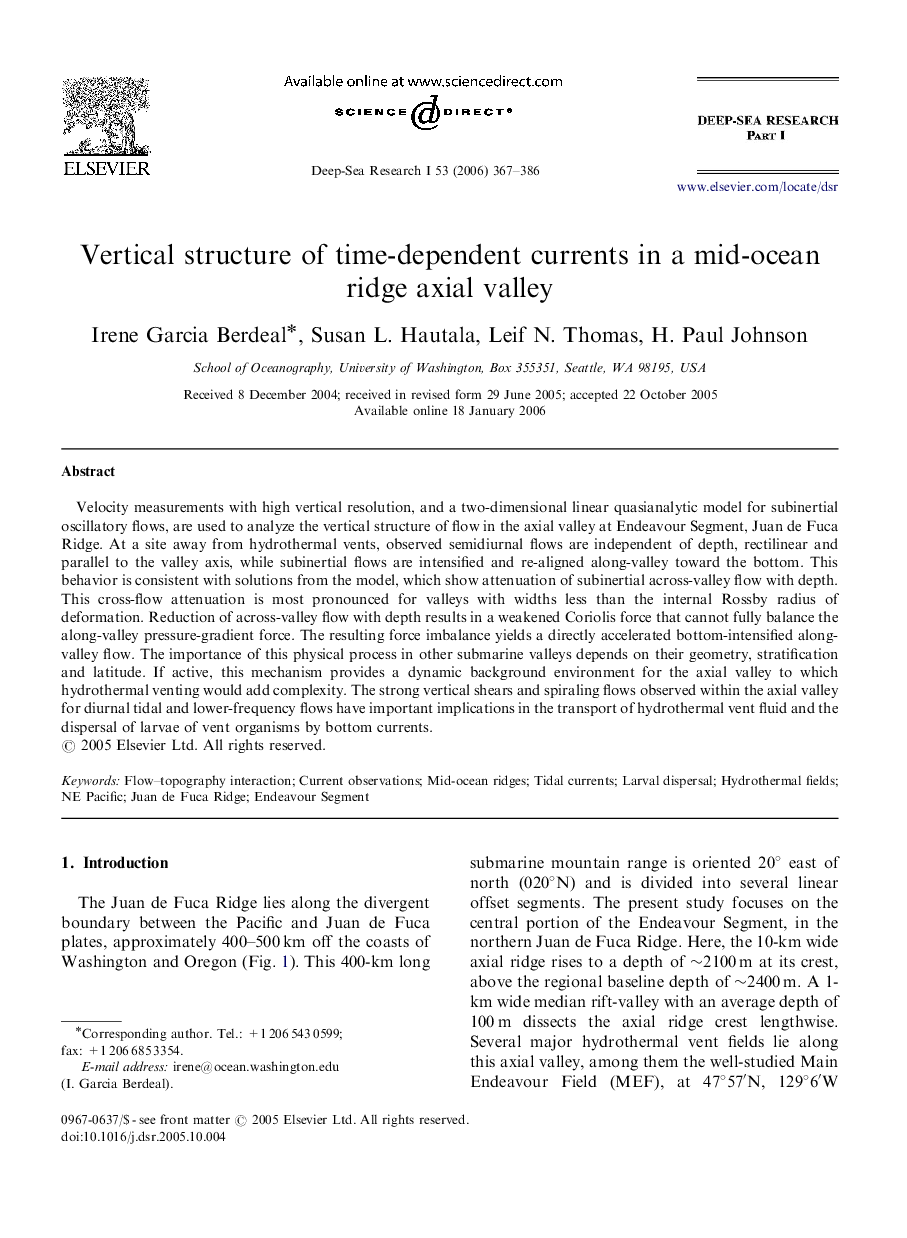| Article ID | Journal | Published Year | Pages | File Type |
|---|---|---|---|---|
| 4535809 | Deep Sea Research Part I: Oceanographic Research Papers | 2006 | 20 Pages |
Velocity measurements with high vertical resolution, and a two-dimensional linear quasianalytic model for subinertial oscillatory flows, are used to analyze the vertical structure of flow in the axial valley at Endeavour Segment, Juan de Fuca Ridge. At a site away from hydrothermal vents, observed semidiurnal flows are independent of depth, rectilinear and parallel to the valley axis, while subinertial flows are intensified and re-aligned along-valley toward the bottom. This behavior is consistent with solutions from the model, which show attenuation of subinertial across-valley flow with depth. This cross-flow attenuation is most pronounced for valleys with widths less than the internal Rossby radius of deformation. Reduction of across-valley flow with depth results in a weakened Coriolis force that cannot fully balance the along-valley pressure-gradient force. The resulting force imbalance yields a directly accelerated bottom-intensified along-valley flow. The importance of this physical process in other submarine valleys depends on their geometry, stratification and latitude. If active, this mechanism provides a dynamic background environment for the axial valley to which hydrothermal venting would add complexity. The strong vertical shears and spiraling flows observed within the axial valley for diurnal tidal and lower-frequency flows have important implications in the transport of hydrothermal vent fluid and the dispersal of larvae of vent organisms by bottom currents.
